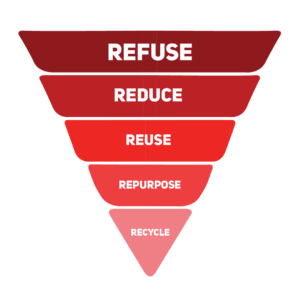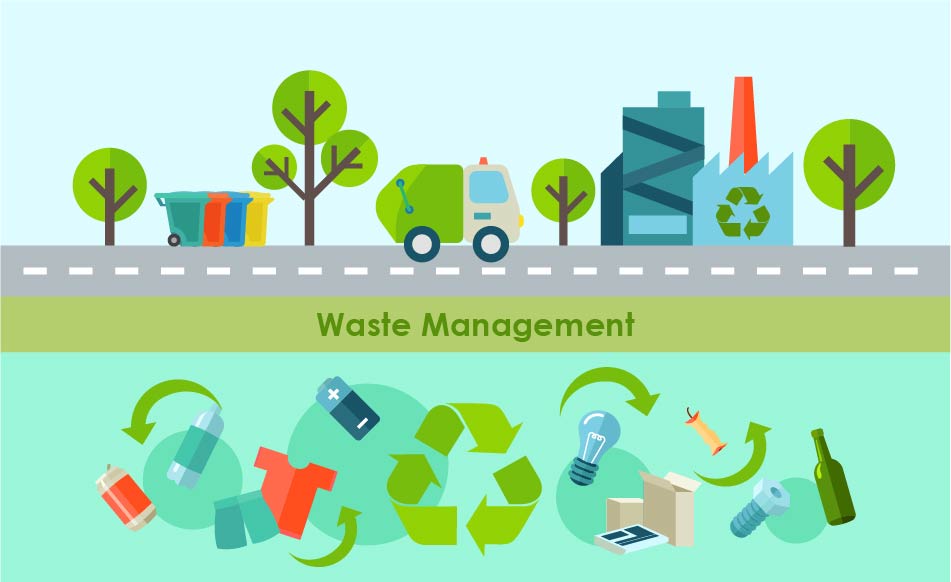The collection, transportation, and disposal of garbage, sewage, and other waste products are called waste management. It refers to all the procedures and actions needed to handle trash beginning with the collection and ending with the disposal. This comprises monitoring and regulation in addition to the collection, transportation, treatment, and disposal of waste. It also includes the legislative and regulatory framework related to waste management, including recycling guidelines, etc. There are essentially eight main categories of waste management techniques, and each of these is further subdivided. Some categories include source reduction and reuse, animal feeding, recycling, composting, fermentation, landfills, incinerators, and land application. The following is a list of some of the most popular trash disposal techniques:
- Landfills – Landfills are most frequently utilized in poor nations like India and include burying rubbish in the ground after it has been cleaned of its stench. Unfortunately, landfills cause water and air pollution, which has a serious negative impact on the environment and can be lethal to both humans and animals. As a result, the application of this method is being reviewed.
- Incineration/Combustion – Municipal solid wastes are burned at high temperatures using this technique, which finally turns the waste into heat, gas, steam, and ash. The ability of this technology to reduce the volume of solid waste to 20 to 30 per cent of the original volume is by far its greatest benefit. Also, the reduced space needed as a result of the volume reduction lowers stress on landfills.
- Recovery and Recycling – Resource recovery and recycling involve taking usable leftovers and putting them to a specified new use. The wasted objects are then processed and transformed into energy that can be used as fuel, heat, or power. Recycling is the process of turning discarded materials into new ones in order to conserve energy and fresh raw materials.
- Composting – Composting is a simple and natural bio-degradation process that converts organic wastes, such as plant remnants, garden debris, and kitchen scraps, into nutrient-rich food for plants. It is typically employed for organic farming and is regarded as one of the best ways to dispose of garbage because it may transform hazardous organic waste into safe compost.
One of the most helpful concepts in waste management is following the rule of 5 R’s of waste management as it helps to avoid being wasteful and make a more sustainable business. The 5 R’s of waste management are – Refuse, Reduce, Reuse, Repurpose and Recycle. It is essential for a business to follow the steps to every last detail in order for the plan to work to its full potential.

- Refuse – The first of the 5 R’s of waste management is refuse. In this step, a business will have to minimize waste production by refusing to use materials such as single-use plastics and non-recyclable products. Businesses should avoid using packaging that is extra or unnecessary and instead use reusable/ returnable containers and packaging materials. Making wiser buying decisions and keeping standards that are more efficient at the beginning of the waste management process will make refusing unnecessary waste much earlier.
- Reduce – It refers to the reduction of harmful, wasteful, and non-recyclable materials to make a more sustainable future by limiting the negative impact on the environment. For example, businesses can reduce the amount of paper used by printing a document on both sides of the paper instead of printing only on one side.
- Reuse – Reuse is the 3rd and the most important among the 5 R’s of waste management because in an effort to reduce waste,it is essential that the existing items are reused as much as possible. Presently, single-use plastics have created a “Use and Throw” culture by normalizing the consumption pattern of using a product once and then discarding it. The rate at which we consume single-use plastic is alarming and the plastic crisis has become one of the world’s greatest environmental challenges. Therefore, it is very essential for a business to switch to using reusable items instead of single-use plastic.
- Repurpose – If any item cannot be refused, reduced or reused in a business, then, it should be repurposed. Also known as upcycling, the idea of repurposing involves taking items that were meant for one purpose but can be used for other ones. Repurposing requires creatively thinking out of the box for solutions but if we look around, common-use office supplies such as cardboard boxes and packaging materials can be used for multiple purposes instead of discarding after single-use.
- Recycle – The final R among the 5 R’s of waste management is Recycle. Recycling is the most environmentally friendly waste disposal method and should be done after completing the other 4 R’s of waste management. In order to be sustainable, a business must recycle any and everything that can be recycled and used and ensure that they maximize the use of recyclable items in their day-to-day business operations.
Conclusion
Therefore, we see how the application of 5 R’s of waste management and recycling strategies can positively impact both the business and the environment by either significantly reducing the amount of waste generated or by the adoption of sustainable products in the day-to-day operations of an enterprise. Moreover, in the 5 R’s hierarchy of waste management, it is essential to treat recycling as a last resort after attempting to refuse, reduce, reuse or repurpose the generated waste.



